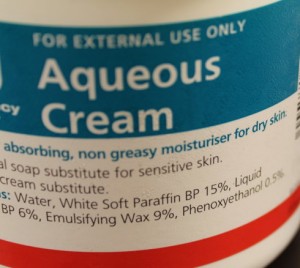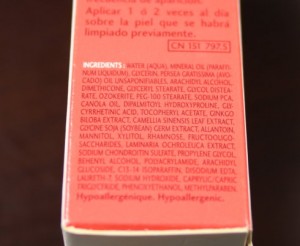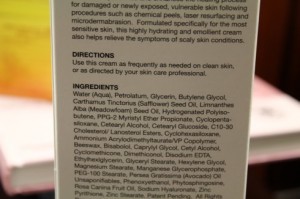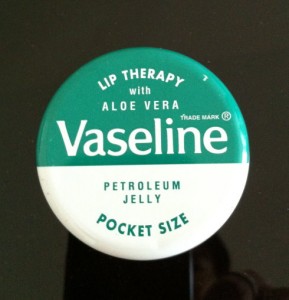這是一篇很值得閱讀的文獻。(我已經為大家記下要點,看以下中文字便可。)
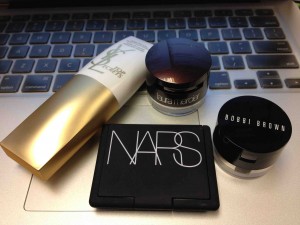
化妝品與暗瘡 Facial Cosmetics and Acne
What exactly does a patient mean when reporting that a certain cosmetic causes her face to "break out?" This phrase may refer to formation of a comedone, papule, pustule, nodule, cyst, or red rash. In addition, patients often have difficulty establishing a cause-and-effect relationship. From a dermatologic standpoint, the term that is still used to refer to cosmetic-related acne is acne cosmetica.
化妝品引發的暗瘡
Acne cosmetica is a concept that was developed many years ago when cosmetics could indeed cause comedone formation. The issue of comedogenicity in relation to cosmetics arose in 1972 when Kligman and Mills described a low-grade acne characterized by closed comedones on the cheeks of women aged 20-25. Many of these women had not experienced adolescent acne. The authors proposed that substances present in cosmetic products induced the formation of closed comedones and, in some cases, a papulopustular eruption. Presently, personal communication with Dr. Kligman indicates that he no longer believes currently marketed cosmetics cause comedone formation, yet acne related to cosmetics remains a problem.
這是源於 1972 年 Dr. Kligman 認為 化妝品的成份,可引致暗瘡。可是這個概念,對現在的化妝品 (指有一定質素的),已不太合用了。
The literature reports lists of ingredients that supposedly cause acne, but finding a formulation that possesses none of these substances is practically impossible. The list contains some of the most effective emollients (eg, octyl stearate, isocetyl stearate), detergents (eg, sodium lauryl sulfate), occlusive moisturizers (eg, mineral oil, petrolatum, sesame oil, cocoa butter), and emulsifiers found in the cosmetic industry. A product line that avoids all of these substances would not perform well on the skin and would possess low cosmetic acceptability.
There are many myths regarding cosmetics and cosmeceuticals and the acne that they may or may not cause. Examining these myths to determine the medical truth is worthwhile.
以下是一些沒有事實根據的觀點
The first myth is that cosmeceuticals do not produce acne if labeled noncomedogenic and nonacnegenic. Similar to the term hypoallergenic, labels that describe products as noncomedogenic and nonacnegenic are marketing claims carrying no implied regulation. They were developed to create a new consumer image for cosmetic lines designed to minimize acne.
一些標榜 ‘不引致暗瘡’ ‘不引致毛孔阻塞’ 標語 ,跟 ‘低敏配方’一樣,都是沒有標準的市場學字句,只在於建立消費者對產品的信心。看到這些字句,購買時才有信心?
In order to market a product as noncomedogenic, rabbit ear or human comedogenicity testing should be undertaken. Both the animal and the human model are based on the presence of new comedone formation after the exposure of skin to the finished cosmetic. Human testing is considered to be more accurate, but the results are highly dependent on the skill of the contract testing laboratory. Acnegenic claims are based on human use testing and the evaluation of volunteer subjects who report any increased acne following product use. Many manufacturers, however, make noncomedogenic and nonacnegenic claims based on the safety profiles of the individual ingredients in the formulation. This is inaccurate. Noncomedogenic and nonacnegenic claims should be made based on clinical testing of the finished formulation. Therefore, dermatologists should still consider all products labeled noncomedogenic or nonacnegenic as potentially problematic.
廠商在產品研發時,會在動物和人類皮膚上測試,是否阻塞毛孔,引致暗瘡。優質的化妝品,會以完成後的配方作測試。只以產品中的個別成份作測試,即使是沒有引致阻塞毛孔和暗瘡,也是不可靠的。
(只看着那成份表,用產品中個別成份的功效,作為分析該產品的理據,也是不對的。 要考慮各成份互相作用,互相影響,穩定性和吸收度,光破壞和氧化分解⋯等等。這個跟給你食材表,就以爲可以煮出美餸菜一樣的道理!不是天真了一點嗎? Dr James)
The second myth is that mineral oil is comedogenic. Mineral oil is one of the most common ingredients in skin care products and colored cosmetics. It is a lightweight inexpensive oil that is odorless and tasteless. One of the common concerns regarding the use of mineral oil is its presence on several lists of comedogenic substances. These comedogenic lists were developed many years ago yet remain frequently quoted in the dermatologic literature.
Several points are important to consider. First, different grades of mineral oil are available. Industrial grade mineral oil is used as a machine lubricant and is not of the purity required for skin application. Cosmetic grade mineral oil is the purist form without contaminants. Industrial grade mineral oil may be comedogenic, but cosmetic grade mineral oil is not. Quality manufacturers only purchase quality products from quality suppliers who guarantee the standards of the materials they provide. This author considers cosmetic grade mineral oil noncomedogenic based on findings from testing performed for the skin care industry.
礦物油會引致毛孔阻塞和暗瘡? 礦物油以不同的純度分成多個等級,有工業用,也有最潔淨的和沒有用污染物的。後者是不會引致毛孔阻塞和暗瘡,現在的化妝品,都是用它作成份。
The third myth is that sunscreens produce acne. Many patients note the occurrence of breakouts following the use of sunscreens. These patients typically present with perifollicular papules and pustules in a random distribution over the face. Eruptions appear within 24-48 hours after wearing a facial sunscreen. This author has not performed biopsies on patients who develop sunscreen-related acne, but presented below is a hypothesis based on how sunscreens function.
Most sunscreens available today are based primarily on UVB-absorbing ingredients, such as octylmethoxycinnamate, oxybenzone, and homosalate. Many also have UVA-absorbing ingredients, such as avobenzone, titanium dioxide, or zinc oxide, as secondary sunscreens. All of the UVB sunscreens and avobenzone function by transforming ultraviolet radiation to heat energy through a process known as resonance delocalization. This heat energy is appreciated by many patients who state that they do not like wearing sunscreens because the gels or lotions make them feel hot.
In some patients, the increased sweating induced by the sunscreens and the sunny weather may cause increased activity of the eccrine glands. This may cause miliaria rubra that may be magnified by the occlusive nature of the water-resistant, rub-proof sunscreen product. Thus, much of the problem with sunscreen-induced acne is the formation of papules or pustules around the eccrine duct ostia without the sebaceous gland involvement that characterizes true acne.
防曬用品可引致毛孔阻塞和暗瘡,是沒有證實的。有些人對皮膚溫度上升,會有較大反應,引致流汗增加,形成汗腺出口發炎。這跟一般因皮脂腺阻塞引起的暗瘡不一樣。
Myth Four is that a complex skin care regimen of multiple cleansers, moisturizers, and ancillary skin care products is necessary for clear skin. There are many different approaches to skin care, from the no-nonsense soap-and-water approach to the 20-step skin care routine. No routine is established as better. In Japan, skin care is a complex ritual of multiple cleansers, toners, and moisturizers. The Japanese are also considered to have the most sensitive skin of all races, and the incidence of atopic dermatitis is dramatically rising in Japan. Perhaps this due to the use of extensive skin care products. However, without doubt, the more the skin is manipulated, the more opportunity there is for problems to arise. The best advice may be to recommend moderation in skin care.[22 ]
複雜的護膚程序,不單沒有改善皮膚質素,反而引致更多皮膚炎,濕疹⋯等皮膚狀況。建議用溫和簡易的護膚程序。
Myth 5 is that acne breakouts after age 30 years in women are rare and benefit from special skin care. Acne after age 30 years is actually becoming more and more common in women. The cause of this trend is not known, but it appears to be related to fluctuating hormones and the onset of premenopause and perimenopause. This supposition is based on the observation that the acne is not characterized by open and closed comedones, but rather inflammatory papules and pustules. Because these lesions are in the lower epidermis and dermis, special skin care routines cannot have a dramatic effect. Thus, the use of oral antibiotics and hormonal therapies, such as birth control pills or estrogen replacement therapy, are the best options for acne control in this population. Cosmetics and skin care products have little effect on this type of acne. Many mature patients mistake this cyclic hormonal acne for acne related to cosmetic product use.
三十歲以上的女性,因生理週期的影響,較多機會有暗瘡的煩惱。有時會誤以為是化妝品的影響。這些激素轉變引致的皮膚炎,大多是發炎膿皰和丘疹,跟一般毛孔毛孔阻塞的暗瘡不一樣。處理的辦法,不是加強清潔,而是用激素類的治療。
Summary
For all purposes, acne cosmetica is a concept of the past, which the industry has done its best to remedy. Skin care manufacturers are keenly aware of the need to test and formulate products without skin side effects. Yet, many acne myths persist. This article has posed possible answers to some of the most common acne myths submitted by several dermatologists.
結論
化妝品引發的暗瘡 ,是舊概念了。現在的護膚品和化妝品生產商, 利用正確的測試, 致力改善產品質素,令使用者用得放心。
Acknowledgement: Zoe Diana Draelos, MD, Primary Investigator, Dermatology Consulting Services; Private Practice Updated: Apr 30, 2009

